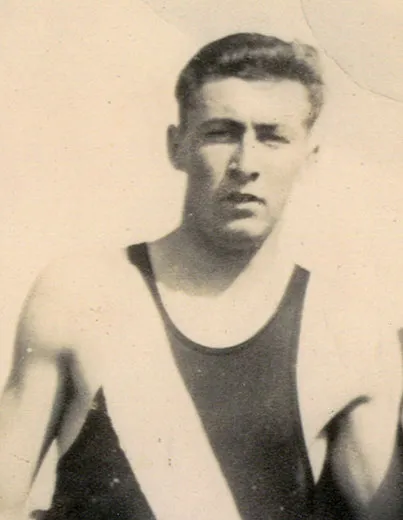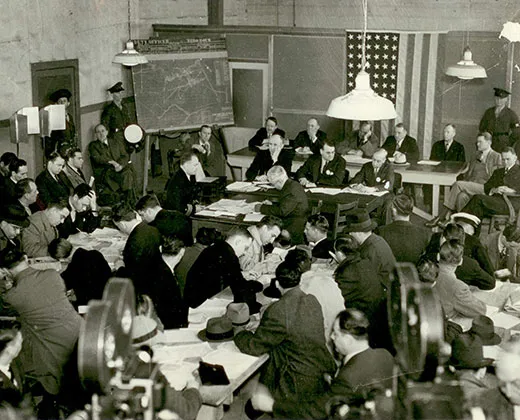Document Deep Dive: A Firsthand Account of the Hindenburg Disaster
Frank Ward was a 17-year-old crewman when he saw the infamous disaster, but his memories of that day are still strong, 75 years later
/https://tf-cmsv2-smithsonianmag-media.s3.amazonaws.com/filer/Hindenburg-inquiry-board-631.jpg)
On May 6, 1937, Frank Ward cut school at noon and hitchhiked to the Naval Air Station in Lakehurst, New Jersey. His father, Peter Ward, was an engineer at the base. So, by extension, 17-year-old Frank, a brawny baseball player and track star at Seton Hall Prep, was regularly recruited to help pull down incoming airships.
This particular day, the Hindenburg was scheduled to land. The 804-foot-long dirigible, built by the Zeppelin Company of Friedrichshafen, Germany, had left Frankfurt just three days prior for its first transatlantic flight of the season. In 14 months of operation, the zeppelin had logged 63 trips. Ward served on the ground crew for five of the Hindenburg’s landings at Lakehurst the previous year and expected this one to go as smoothly as the rest.
Around 7 p.m., the airship edged over the pine-tree horizon and, after some maneuvering, drifted in for landing. Ward and a cluster of other linemen grabbed one of several landing ropes tossed out of the zeppelin. They ran to tighten the slack in the rope, but before they were able to dock the ship to its mooring mast, disaster struck.
The Hindenburg suddenly burst into flames. In just 34 seconds, the vessel crashed to the ground, the future of lighter-than-air commercial travel grinding to a fiery halt with it. While 62 passengers and crew escaped from the smoldering wreckage, 35 perished, as did one ground crew member.
Cheryl Ganz, a leading Hindenburg historian, has spent the better part of her career resurrecting stories from salvaged artifacts. Her primary interest is in zeppelin mail; 360 of the 17,609 pieces of mail aboard the Hindenburg were recovered from the crash site. But her research has also turned up never-before-published photographs taken from the Hindenburg, as well as other documents.
While preparing “Fire and Ice: Hindenburg and Titanic,” an exhibition at the Smithsonian’s National Postal Museum, Ganz studied 1,278 pages of Hindenburg testimony in 14 file boxes held at the National Archives in College Park, Maryland. Amid the documents, she found a form dated May 17, 1937, filled out by Ward. The Bureau of Air Commerce’s inquiry board, tasked with investigating the cause of the accident, asked the lineman ten questions about what he saw and heard as the tragedy played out.
“The board collected these little descriptions and eyewitness accounts before the actual investigation,” says Ganz. “Then, based on what the witnesses saw or what their knowledge level was, they were called for testimony.”
Ward was not plucked for oral testimony. But, 75 years later, his story has become ever more precious. At age 92, Ward, who now resides in Charlottesville, Virginia, is one of the only living members of the Hindenburg ground crew.
The retired history teacher and veteran of both World War II and the Korean War recently shared his memory of the Hindenburg disaster with me. Based on our conversation, I annotated the document Ganz uncovered with added detail.
/https://tf-cmsv2-smithsonianmag-media.s3.amazonaws.com/accounts/headshot/megan.png)



/https://tf-cmsv2-smithsonianmag-media.s3.amazonaws.com/accounts/headshot/megan.png)